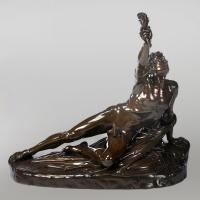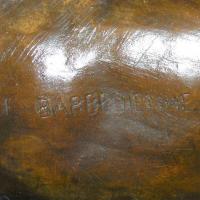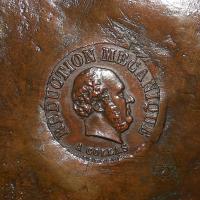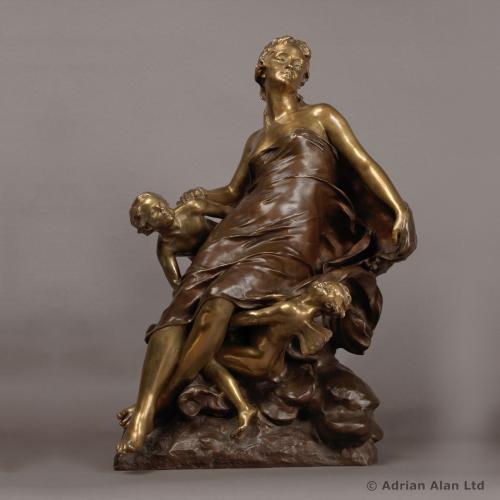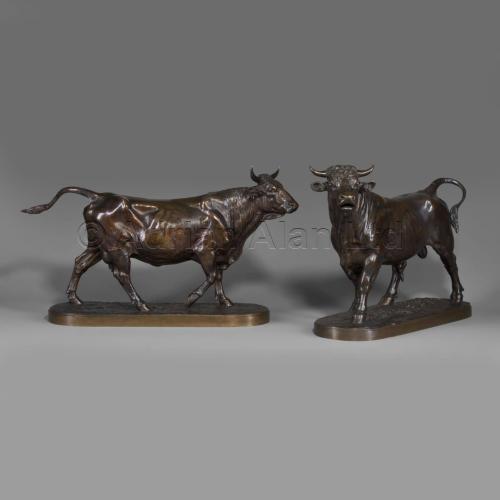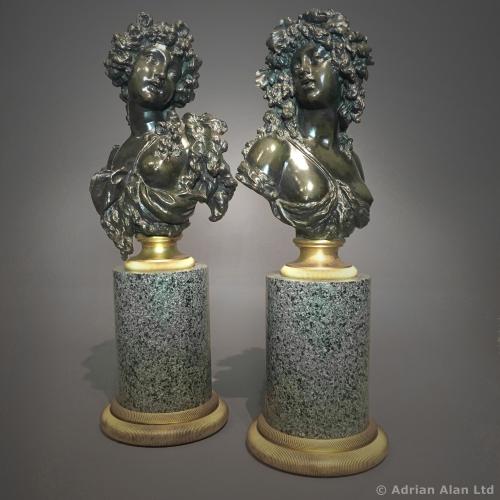
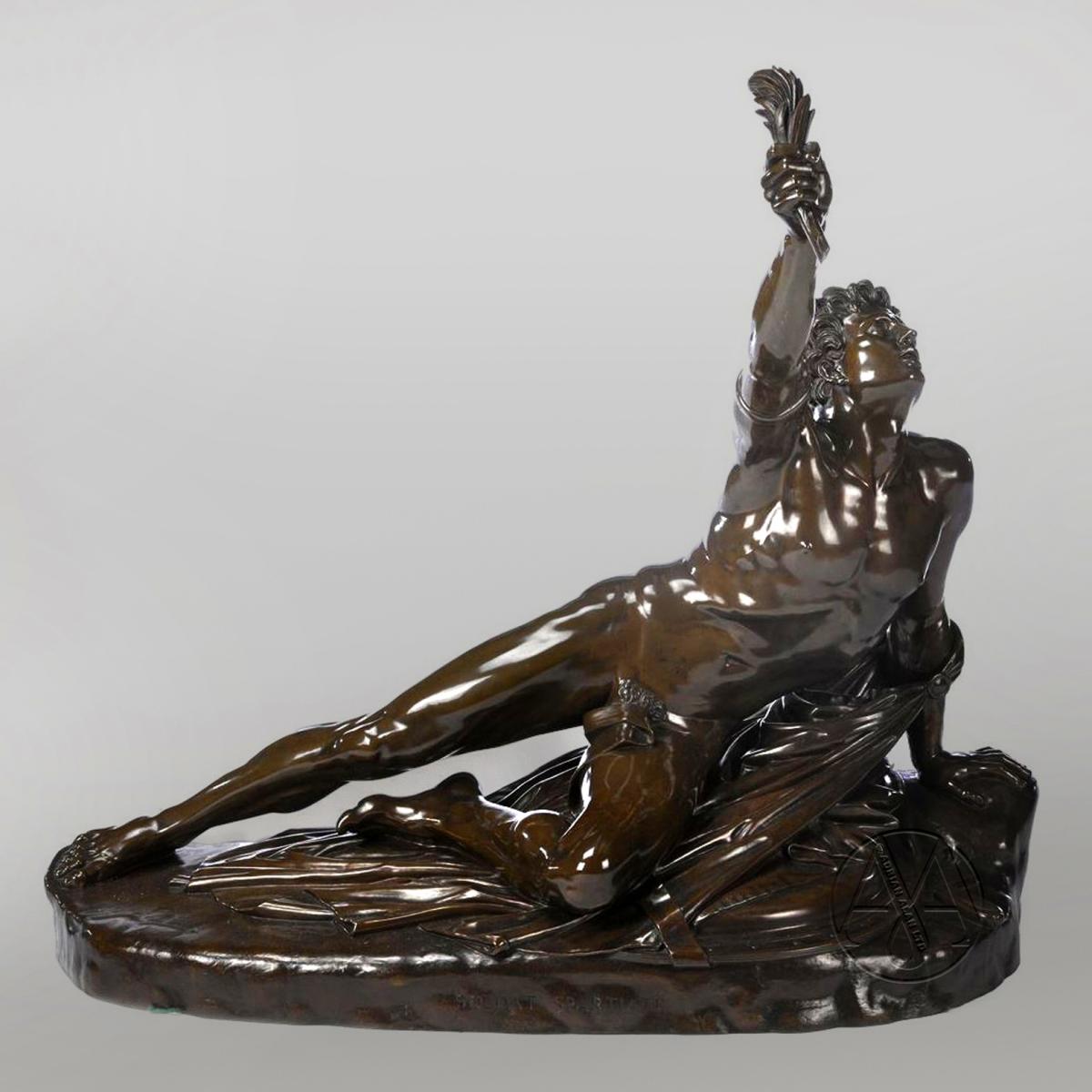
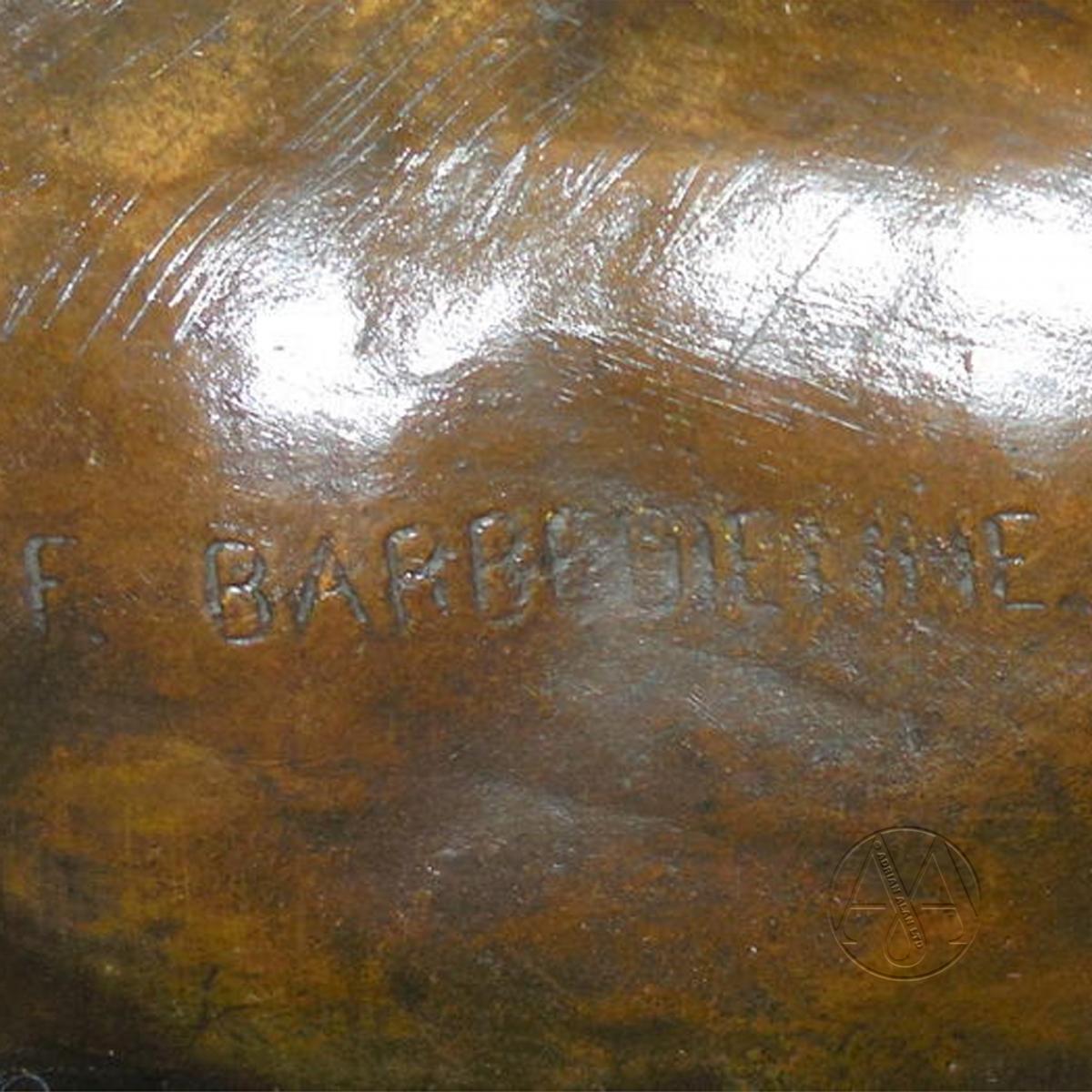
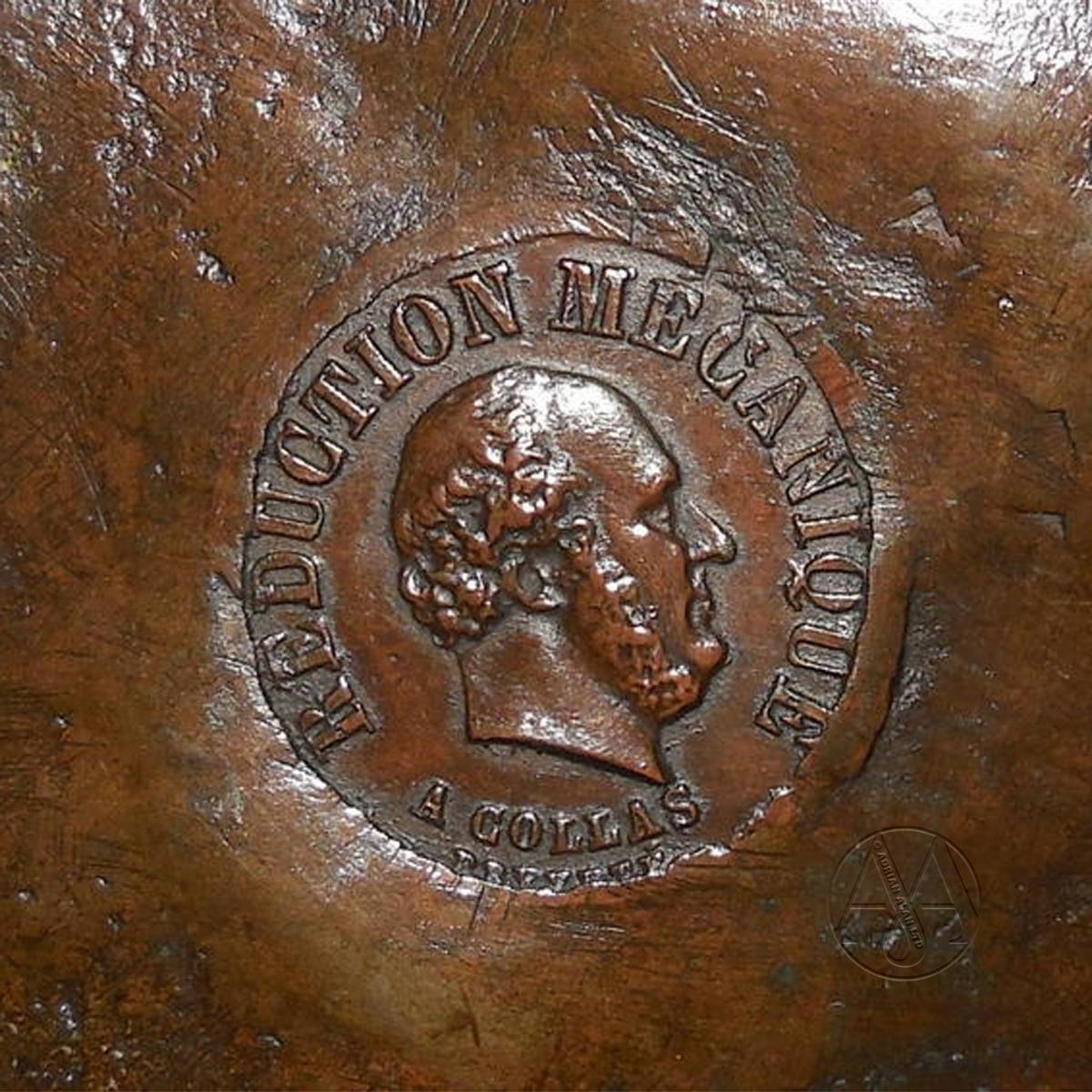
Price on application
This object is eligible for a Certificate of BADA Provenance
The BADA Standard
- Since 1918, BADA has been the leading association for the antiques and fine art trade
- Members are elected for their knowledge, integrity and quality of stock
- Our clients are protected by BADA’s code of conduct
- Our dealers’ membership is reviewed and renewed annually
- Bada.org is a non-profit site: clients deal directly with members and they pay no hidden fees
The Soldier of Marathon - A Large Patinated Bronze Group After A Model by Jean-Pierre Cortot, Cast by Ferdinand Barbedienne.
Jean-Pierre Cortot (d. 1843) studied at the Ecole des Beaux-Arts, Paris. After winning the Prix de Rome in 1809, he returned to Paris as professor at the Ecole. Cortot exhibited the plaster model of this sculpture at the Salon in 1822. In 1831, Louis-Philippe, recently crowned, commissioned a marble version from Cortot which is now exhibited in the Louvre.
Barbedienne edited the model in four sizes, the present cast being an example of the largest.
Ferdinand Barbedienne (1810-1892) was the inspiration and driving force behind one of the most important French art foundries. He pioneered the use of mounts and, more commonly, bronze sculpture including figures and animals. Barbedienne produced catalogues of bronze reproductions of Greek and Roman classical sculpture and experimented with champlevé and cloisonné enamels during the third quarter of the century. Barbedienne exhibited several pieces of furniture at the 1855 Paris Exhibition including an ormolu mounted oak dressing table and an ormolu mounted ebony veneered bookcase. Both pieces were executed in his favoured Renaissance revival style for furniture. Furniture with mounts signed by Barbedienne is extremely rare.
The Barbedienne foundry handled the casting of numerous national monuments and architectural schemes. Ferdinand Barbedienne himself also took an active part in the promotion of contemporary sculpture and became one of the founders for David d'Angers' medallions as well as much of Rude's sculpture.
His signature varied from hand written capitals to stamp in capitals, usually 'F. Barbedienne, Fondeur' or 'BARBEDIENNE PARIS'.
In 1839 Barbedienne collaborated with the inventor Achille Collas who had succeeded in enlarging and reducing works of art to arbitrary sizes by a simple mathematical calculation, allowing the accurate reduction of classical and contemporary marbles for the purpose of reproduction in bronze. In 1850 Barbedienne was commissioned to furnish the Paris town hall for which he was awarded with the médaille d'honneur at the Paris Exposition Universelle in 1855.
French, Circa 1880.
Bibliography:
Barbedienne, Ferdinand. Catalogue des Bronzes d'art 1886.
Fonderie d'art Français: Val d'Osne, Fonderie de Tusey, Antoine-Louis Barye, Fonderie Rudier, Charles Crozatier, Ferdinand Barbedienne' Livres Groupe, (Paris), 2010.
Dimensions
Height: 96cm Width: 107cm Depth: 39cmStock number
B71666The BADA Standard
- Since 1918, BADA has been the leading association for the antiques and fine art trade
- Members are elected for their knowledge, integrity and quality of stock
- Our clients are protected by BADA’s code of conduct
- Our dealers’ membership is reviewed and renewed annually
- Bada.org is a non-profit site: clients deal directly with members and they pay no hidden fees


